When people shop for a new vehicle, the decision often hinges on style, performance, features, fuel economy, or even brand loyalty. Rarely, however, do prospective buyers ask one critical question: How long will this car spend in the shop every time it needs service?
It’s a practical yet underappreciated factor that can significantly impact long-term satisfaction, convenience, and cost of ownership. Whether you’re a first-time buyer or a seasoned car enthusiast, understanding how much time a vehicle typically demands during service visits can be as crucial as knowing how fast it accelerates or how many miles it gets per gallon.
Average service-visit hours reflect more than just how often a car needs attention. They reveal how thoughtfully it was engineered from a maintenance standpoint. Was it built with the mechanic or the owner in mind? Is it designed for ease of access to key components, or does it require hours of disassembly for a basic repair?
The answer to these questions often separates truly practical vehicles from those that are performance showpieces or luxury flagships. The difference between a car that requires 45 minutes for an oil change and one that takes six hours to replace a simple sensor could mean the loss of a workday, extra costs in rental fees, or the general inconvenience of rearranging your schedule.
This article takes a deep dive into two sharply contrasting lists: the five vehicles that are least demanding in terms of service hours and five that are notorious for soaking up time in the shop. These rankings aren’t solely about reliability or parts cost—they’re about the actual labor hours required during standard maintenance or typical repairs.
This includes oil changes, brake work, electrical diagnostics, suspension fixes, engine component access, and more. The goal is to offer insight into how efficiently a vehicle can be maintained once the honeymoon phase of new ownership wears off.
The first half of the article highlights five vehicles that are paragons of service efficiency. These cars and trucks consistently require fewer hours per visit, often due to clever design, widespread parts availability, and sensible component layout. Models like the Toyota Corolla, Honda Civic, and even certain trims of the Ford F-150 are designed with ease-of-maintenance in mind.
They don’t just reduce the cost of ownership—they reduce the time of ownership, freeing drivers from long waits at the mechanic or the dealership service center.
The second half focuses on the other end of the spectrum: vehicles that, while luxurious or high-performing, demand considerable time for even routine service. Brands like BMW, Mercedes-Benz, Audi, and Land Rover fill this space. These vehicles are marvels of modern engineering, no doubt, but they often sacrifice serviceability for the sake of luxury features or performance tech.
The result is longer shop visits, higher labor costs, and greater dependence on specialized tools or dealer-only diagnostics. For owners, that can mean days without their car—even for issues that might be resolved in an hour on a more practical model.
It’s important to note that high service hours don’t necessarily equate to bad cars. Many people knowingly buy a high-maintenance vehicle for its style, prestige, or capability.
But understanding what you’re signing up for—in hours, not just dollars—can help avoid frustration down the line. Whether you’re a daily commuter who can’t afford downtime, a rideshare driver counting on every working hour, or simply someone who values efficiency, this list will help you make informed decisions that go beyond the sticker price.
So buckle in as we explore two very different philosophies in automotive design: one that honors your time, and one that demands it.
Also Read: 5 Sedans With Best Turning Radius And 5 With Widest
5 Vehicles with the Fewest Average Service-Visit Hours
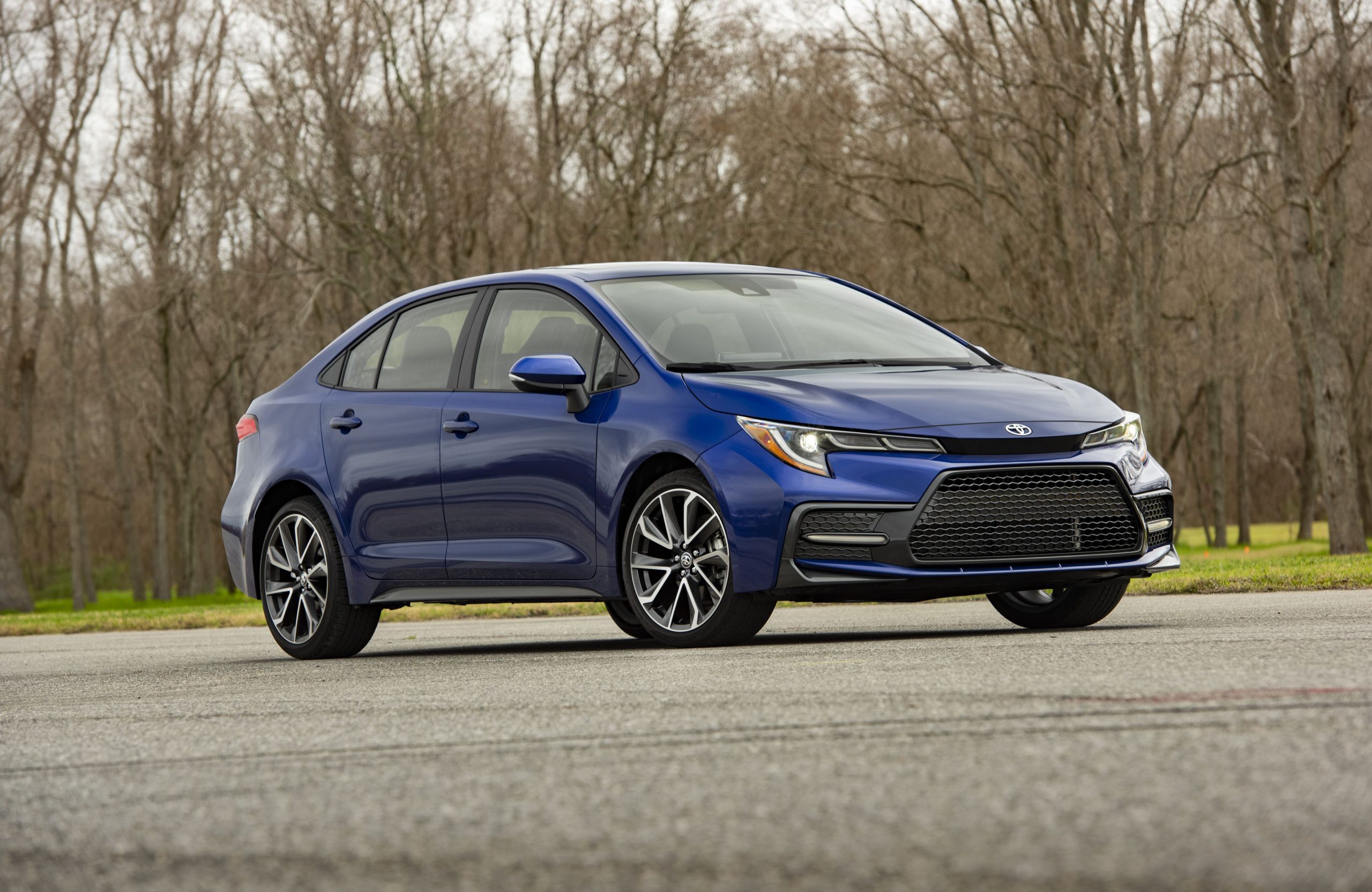
1. Toyota Corolla
The Toyota Corolla has built a global reputation for dependability, and a major part of that reputation comes from its simplicity in service. From an engineering standpoint, Toyota has spent decades refining the Corolla’s layout to reduce labor time during routine maintenance.
The oil filter, for example, is located in an easily accessible position, and the undercarriage design provides clear access for drain plugs and other common service points. This kind of mechanical transparency is what allows mechanics to complete many regular tasks in well under an hour—an achievement few cars in its class can claim.
Another key reason the Corolla performs so well in this metric is its engine and component longevity. Many modern Corollas are equipped with timing chains instead of belts, removing the need for regular timing belt replacements. Additionally, the car’s minimal use of complex electronics or over-integrated components reduces diagnostic time.
When a fault does occur, the Corolla’s reliable on-board diagnostics (OBD) system and wide availability of compatible scan tools mean mechanics can pinpoint issues quickly without dismantling multiple systems to reach the problem.
Mechanics often describe the Corolla as “friendly” or “cooperative” in the shop—a rare compliment in the automotive repair world. Independent mechanics and dealership technicians alike report that the Corolla’s consistent design year-over-year helps reduce training or guesswork.
Many service centers even have Corolla-specific procedures and pre-assembled kits that further slash repair time. This reduces labor hours not just for oil changes and brake services, but also for more advanced tasks like replacing wheel bearings or servicing the A/C system.
From an owner’s perspective, all of this translates into real savings—not just in money, but also in time and hassle. Fewer hours in the shop means fewer days without your vehicle and a reduced need for rental cars or alternative transportation.
For rideshare drivers and delivery workers who depend on uptime, the Corolla’s minimal service time becomes a serious economic advantage. It’s not just that the Corolla is cheap to maintain—it’s also that it rarely needs to be away from the road for long, reinforcing its place as one of the most practical cars in the world.
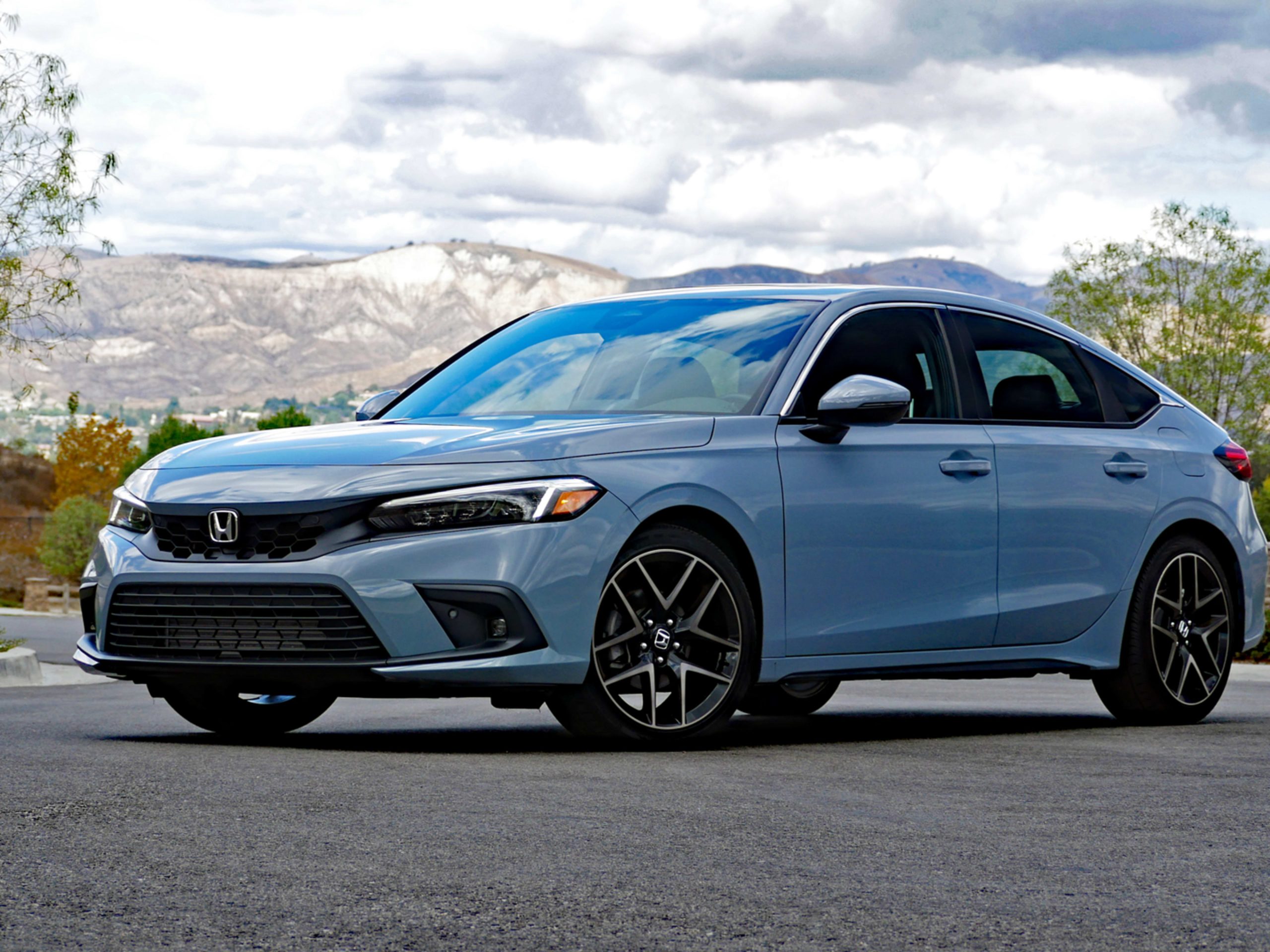
2. Honda Civic
The Honda Civic continues to be a standard-bearer in the compact segment, and part of its popularity stems from how easy it is to service. Honda has engineered the Civic with a focus on modularity and long-term ownership, designing its components in such a way that technicians can access everything from the spark plugs to the alternator with minimal obstruction.
Unlike some brands that hide essential service parts behind layers of plastic or other components, the Civic puts convenience and function at the forefront, ensuring a shorter average service time across almost all models.
One of the Civic’s standout features is its engine layout. Whether it’s the naturally aspirated versions or the turbocharged trims, Honda avoids cramming the engine bay with overly complicated systems. Most models have clearly labeled service points and accessible mounting hardware, which minimizes the time needed for inspections and adjustments.
Even brake system service, which can be time-consuming on some vehicles due to caliper complexity or sensor wiring, is made relatively painless in the Civic. Honda’s well-established part design and simplicity make even DIY servicing feasible for many owners.
From the service technician’s viewpoint, the Civic is consistently among the easiest vehicles to work on in any given model year. Diagnostic procedures are generally quick, especially because Honda’s OBD systems offer detailed error codes and have excellent compatibility with aftermarket diagnostic tools.
Additionally, the Civic rarely suffers from systemic design issues that require lengthy fixes. The air conditioning system, for example, is known to be reliable and well-placed, rarely necessitating teardown or dashboard removal. The same goes for suspension components and electronic modules—each is serviceable in isolation, which drastically reduces overall labor hours.
Perhaps the greatest testament to the Civic’s low service-visit hours is its popularity in high-mileage applications. It’s a favorite among Uber drivers, delivery workers, and college students precisely because it doesn’t require downtime for complicated repairs.
Owners often report bringing their Civics in for a 30-minute oil change or a quick tire rotation, and leaving without any surprise charges or delays. The Civic’s real-world service efficiency makes it not just a smart buy, but a time-saving asset in daily life.
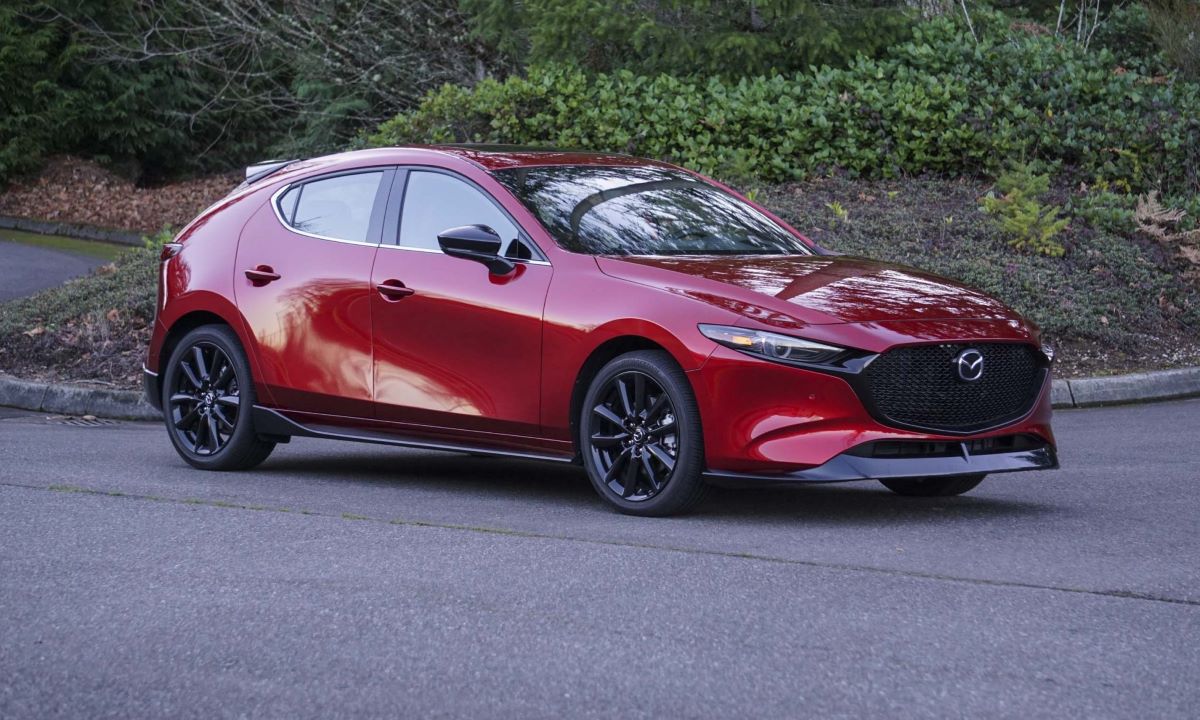
3. Mazda3
Mazda’s engineering strategy with the Mazda3 balances style, performance, and practical serviceability—a rare combination in the compact car segment. The Mazda3’s powertrain and chassis components are intelligently laid out, allowing routine service tasks to be completed in minimal time.
Despite its upscale appearance and engaging drive feel, it is surprisingly straightforward when it comes to maintenance. Mazda’s SkyActiv engines, for example, are designed with fewer parts and more durable components, leading to fewer breakdowns and shorter service times overall.
A significant factor in the Mazda3’s low service-visit hours is how well its engine bay is organized. Technicians often praise the ease with which they can access spark plugs, ignition coils, and even the oil and air filters.
Many cars in this segment require hours of labor to perform what should be routine maintenance due to tight engine compartments or over-stacked components. Not so with the Mazda3. The layout is both efficient and logical, and routine services like filter changes or coolant flushes can be completed quickly, keeping the car out of the shop and on the road.
Another critical aspect that contributes to its service efficiency is the quality of Mazda’s technical documentation. Whether in independent garages or dealership service bays, mechanics often find Mazda’s repair manuals and part diagrams to be exceptionally clear.
This cuts down diagnostic time and reduces mistakes. Even when issues do arise—such as those involving sensors or minor electrical faults—the simplicity and clarity of the Mazda3’s design allow for fast and targeted repairs. Owners benefit from faster turnaround times, fewer service delays, and, ultimately, lower labor costs.
For drivers, the Mazda3 is one of the rare compact cars that doesn’t demand constant attention yet still delivers a premium experience. Its relatively low time in the service bay gives peace of mind, particularly to drivers who want a car that’s both stylish and low-hassle.
In a market filled with vehicles where form often sacrifices function, the Mazda3 strikes a careful balance. It proves that driving excitement and maintenance efficiency are not mutually exclusive.

4. Hyundai Elantra
Hyundai’s strategic rise to prominence over the last decade has been fueled by a focus on customer satisfaction, value, and ease of maintenance, and the Elantra is a prime example of this strategy.
It combines low ownership costs with a service-friendly design, making it a top choice among drivers who want a no-fuss vehicle. The Elantra’s mechanical layout is straightforward, and its frequently updated service procedures are designed to be completed quickly and easily, often within a single work session.
One of the key advantages of the Elantra is its use of standardized components across multiple models. Hyundai’s shared platform approach means that service parts—like filters, belts, and sensors—are not only easy to obtain but also designed for rapid replacement.
For example, oil changes and brake pad replacements on most Elantra models can be performed in under an hour. Even more complex services like valve cover gasket replacements or transmission fluid flushes are designed with modular access points, minimizing disassembly and reassembly time.
Hyundai also puts significant effort into training dealership and independent technicians. Service centers that handle Elantras often have access to digital repair guides and streamlined diagnostic tools that work efficiently with the car’s onboard systems.
This reduces troubleshooting time significantly, especially for minor electrical faults or emissions issues. The Elantra’s electronics systems are designed with fewer points of failure, and many parts—like fuse boxes and relays—are conveniently located for quick testing and swap-out.
For the driver, these engineering decisions translate to lower bills, less time spent in the waiting area, and fewer extended visits to the dealership. The Elantra doesn’t just have a low service cost—it also avoids lengthy stays at the shop.
This reliability, combined with Hyundai’s long warranty, provides a strong argument for its place on this list. For budget-conscious drivers who value their time as much as their money, the Elantra is a smart, efficient choice that keeps maintenance downtime to an absolute minimum.
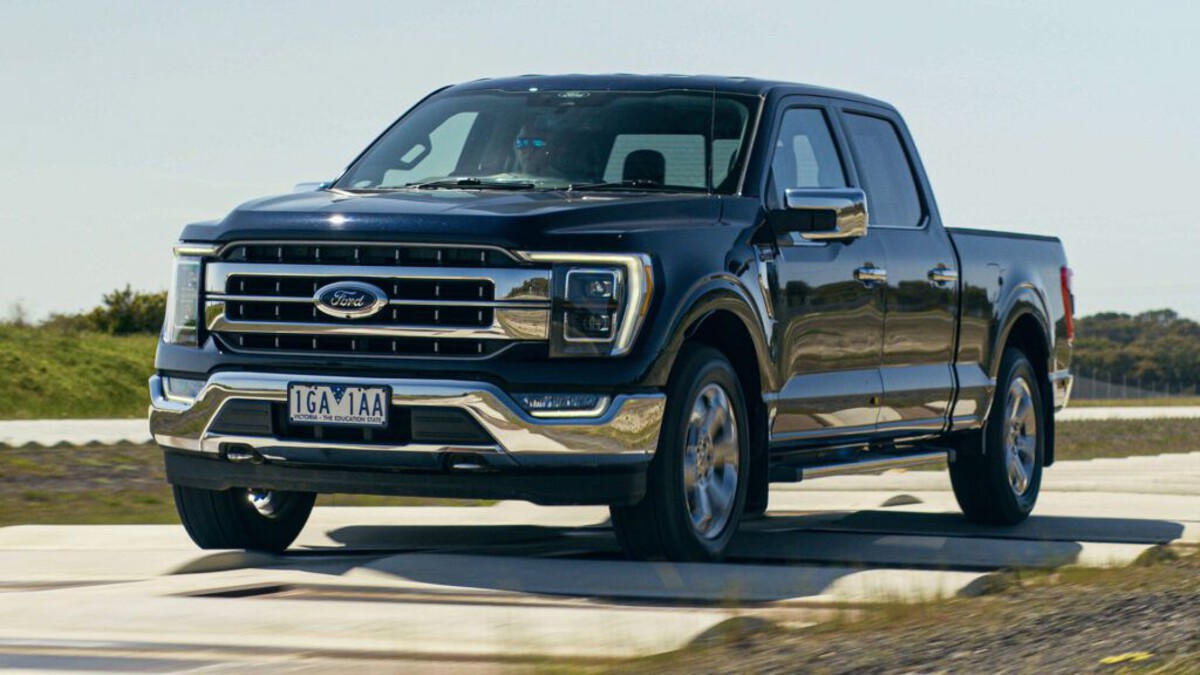
5. Ford F-150 (Base Models)
The Ford F-150, especially in its lower trims and naturally aspirated engine variants, is one of the most time-efficient vehicles to service—despite being a full-size truck. This is largely due to its sheer size and smart under-hood layout.
Base model F-150s, which are often sold for work and fleet use, are designed for easy access to nearly every major service component. The extra space under the hood makes a massive difference when compared to more compact vehicles, allowing mechanics to work faster and more comfortably.
Many of the F-150’s components are also engineered with service speed in mind. Ford uses durable, modular parts that are easy to remove and replace without needing specialized tools. Oil changes are typically quick thanks to convenient placement of the drain plug and filter.
Even spark plugs, which are notoriously frustrating on some V8s, are accessible without removing engine covers or accessory belts. Fleet managers often cite the F-150’s low service hours as a key reason for choosing it over competitors like the Chevy Silverado or RAM 1500.
From a technician’s point of view, the F-150 is a pleasure to work on compared to more cramped or over-engineered trucks. Suspension components, exhaust systems, and drivetrain parts are laid out logically, and there’s little need for the multi-hour disassembly required on more complex vehicles.
Even transmission services, while more involved, benefit from an accessible underbody and easily detached crossmembers. For commercial operations where downtime equals lost revenue, the F-150’s fast serviceability is a huge asset.
For owners, the result is a full-size truck that doesn’t act like one in the shop. It gets in and out quickly, doesn’t require long waits for parts or labor-intensive diagnostics, and delivers consistent, predictable maintenance needs.
This makes it ideal for business use, long commutes, or personal tasks. While upper trims with turbocharged engines or luxury add-ons may increase service complexity, the core workhorse models remain some of the most efficient vehicles on the road in terms of service-visit hours.
5 Vehicles That Demand the Most Service-Visit Hours
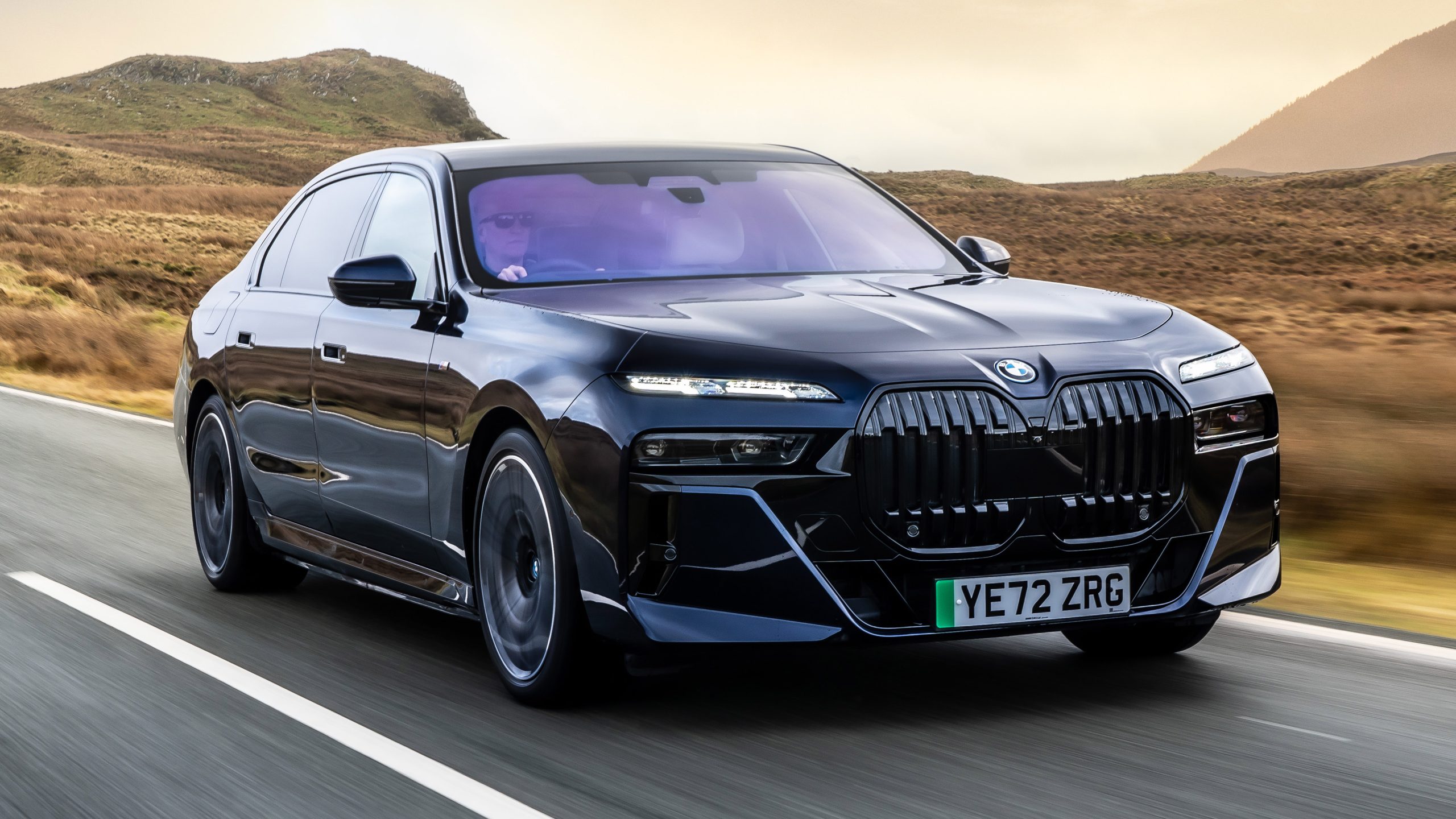
1. BMW 7 Series
The BMW 7 Series is a flagship luxury sedan that epitomizes performance, comfort, and cutting-edge technology. However, all that luxury comes with a high cost, especially in terms of service-visit hours.
The 7 Series is densely packed with high-end features and sophisticated systems that often require extensive labor for even routine tasks. The engine bay, while powerful, is tight and full of components layered over one another, which significantly complicates even basic maintenance procedures like oil changes or battery replacements.
One of the key issues with the 7 Series is the integration of electronics and sensors throughout the vehicle. While these systems enhance driving experience and safety, they can also lead to longer diagnostic times when a problem arises.
For example, accessing a failed air suspension module or a faulty driver-assistance sensor may require the removal of body panels or partial disassembly of the undercarriage. Additionally, BMW’s proprietary diagnostic systems often require dealership-level equipment, further lengthening visits for software resets or electronic calibrations.
Another contributor to high service hours is BMW’s use of high-performance components that are not always engineered with ease-of-replacement in mind. For instance, turbocharger replacements or coolant line repairs can require multiple hours of labor due to their buried location within the engine bay.
Even replacing a spark plug may take far longer than average, especially in the V8 or V12 variants, where additional components must be removed first. Technicians often need to remove engine covers, intake manifolds, and other parts just to reach standard wear-and-tear components.
Owners of the 7 Series often accept these long service hours as the price of luxury. While BMW’s customer service at dealerships typically includes loaner cars and lounge areas, the reality is that the vehicle might spend an entire day—or more—in the shop for a repair that would take a fraction of the time on a more utilitarian model.
This has implications not just for cost, but also for convenience, making the 7 Series one of the more service-intensive vehicles on the market.

2. Range Rover (Full-Size)
Range Rovers are admired worldwide for their blend of luxury and off-road capability, but they also have a well-earned reputation for spending long hours in the shop.
The full-size Range Rover, in particular, is a complex machine loaded with air suspension systems, terrain response technology, and high-end interiors packed with electronics. This level of sophistication, while appealing on the surface, often translates to incredibly high service times due to both diagnostic complexity and part accessibility.
A common area of service delays involves the air suspension system, which is notoriously prone to wear and failure in Range Rovers. Replacing a failed suspension compressor or airbag isn’t just a matter of swapping parts—it often involves recalibration, software updates, and lengthy mechanical work that includes partial disassembly of wheel wells or underbody panels.
Similarly, cooling systems and drivetrain components like transfer cases and differential locks are tightly packed and often require specialized tools to service, which adds time to even basic operations.
Another issue contributing to lengthy service visits is the interior electronics suite. Range Rovers feature dozens of sensors, infotainment modules, and comfort control units that can fail independently or in combination. Accessing many of these systems requires removing dashboard panels, console assemblies, or even rear seats, significantly extending labor time.
Furthermore, the electrical architecture is complex and often unique to each model year or trim level, leading to increased diagnostic times and greater reliance on brand-specific scan tools.
From the perspective of ownership, these long service times can be particularly frustrating, especially considering the premium price point of the vehicle. While Range Rover owners often enjoy complimentary maintenance plans and extended warranties, the inconvenience of extended shop stays can sour the ownership experience.
Whether it’s waiting on parts from overseas or coordinating software updates that take hours, the Range Rover is emblematic of a vehicle whose luxury is often shadowed by high time demands in the service bay.
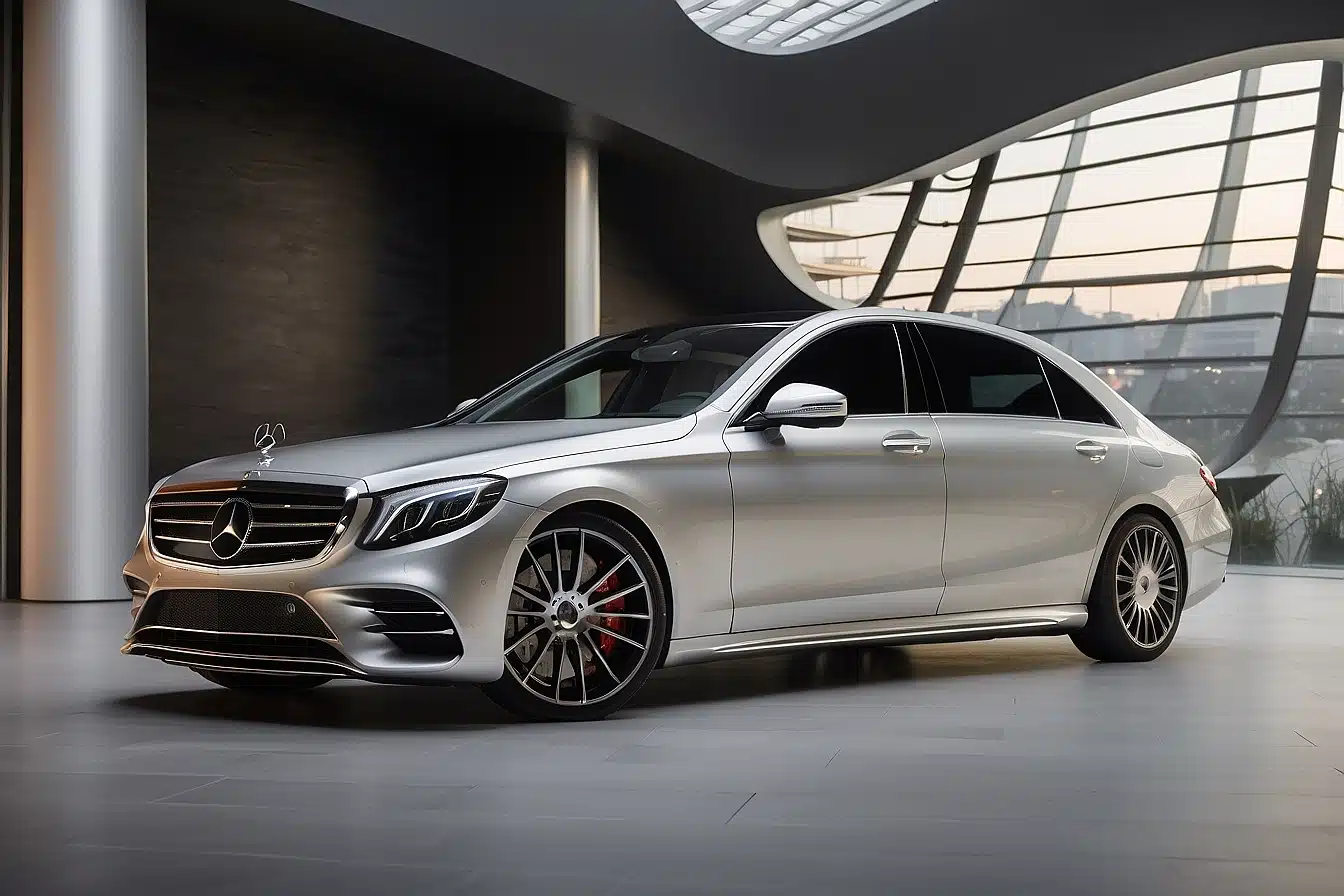
3. Mercedes-Benz S-Class
The Mercedes-Benz S-Class is often considered the pinnacle of automotive engineering, offering industry-leading features in comfort, performance, and technology. However, these advancements come with significant drawbacks when it comes to maintenance.
The S-Class is among the most complex vehicles on the road today, with layers of integrated systems that make it incredibly time-consuming to service. Whether it’s the engine, the air suspension, or the massive digital dashboard, servicing an S-Class often involves labor-intensive disassembly and reassembly procedures.
The engine bay, especially in models equipped with turbocharged V8 or V12 engines, is tightly packed. Accessing common wear parts like spark plugs, ignition coils, or fuel injectors may require the removal of intake manifolds or engine mounts.
Even a simple oil leak can take hours to address, as the location of gaskets and seals is often buried under several layers of hardware. These access challenges directly translate to longer shop hours and higher labor costs.
Equally daunting is the electronic system within the S-Class. Each car features an intricate network of control units that govern everything from adaptive headlights to massage seats.
When any one of these systems experiences an error, pinpointing the source can take considerable time—even with advanced diagnostic tools. Moreover, replacing electronic modules usually requires coding and calibration that can only be performed by Mercedes-specific diagnostic systems, further extending the average service time.
To compound the issue, the materials and craftsmanship that make the S-Class so luxurious can also hinder serviceability. High-quality interior trim must often be removed to access modules or wiring, and this removal must be done delicately to avoid damage.
Unlike simpler vehicles where plastic clips can be pulled apart and snapped back together, S-Class trim often includes real wood veneers or metal accents that require time-consuming care. As a result, even relatively minor interior service issues can result in several hours at the dealership, making the S-Class a stunning, yet service-intensive car to own.

4. Audi Q7
The Audi Q7 is a seven-seat luxury SUV that delivers a smooth ride, robust performance, and top-tier technology—but it also brings with it some of the longest service times in its category.
From the engine bay to the electronic systems, the Q7’s design prioritizes performance and aesthetics, often at the expense of accessibility. The result is a vehicle that can be a pleasure to drive, but a challenge to maintain without extensive hours on the lift.
Under the hood, the Q7 features powerful engine options like turbocharged V6s and even V8s in performance trims. These engines are tightly packed, and their transverse orientation in a relatively short front end makes even basic access a challenge.
Replacing spark plugs or performing a coolant flush can be a multi-hour job simply because the technician must remove engine covers, piping, and sometimes even radiator components just to reach the necessary areas. Timing chain service—should it be needed—can require partial engine removal, pushing repair times well beyond a full day.
Another pain point for the Q7 is its suspension and drivetrain layout. Models equipped with Audi’s adaptive air suspension require not only mechanical servicing but also electronic recalibration using dealer-only diagnostic tools.
Even brake pad changes may be time-consuming due to electronic parking brakes that need to be disengaged using software tools before work can begin. These seemingly minor complications add up, increasing the hours a Q7 spends in the service bay even for what would be routine jobs on other vehicles.
The Q7’s sophisticated infotainment and driver-assistance technologies also contribute to lengthy diagnostics and updates. Many owners report issues with navigation modules, rear entertainment systems, or sensor calibrations that cannot be resolved without extended diagnostic time and occasional replacement of expensive, tightly integrated modules.
Firmware updates can take hours to install and configure, especially when they include multiple systems or require approval from Audi’s network.
While Audi offers maintenance plans and customer support, the inconvenience of long service visits remains a downside for Q7 ownership. The vehicle’s engineering is world-class, but that excellence comes at the cost of extended service procedures. For drivers who prioritize performance and luxury over ease-of-maintenance, the Q7 delivers—but with the caveat that the shop visits are never brief.

5. Alfa Romeo Giulia Quadrifoglio
The Alfa Romeo Giulia Quadrifoglio is a high-performance sports sedan that blends Italian styling with Ferrari-derived engineering—but this pedigree comes with considerable maintenance demands.
The Giulia Quadrifoglio is not a car designed with simplicity in mind; it’s engineered for performance above all else, and that translates into longer-than-average service visits, even for routine work. Its engine, electronics, and chassis systems are all packed tightly together, requiring extensive disassembly for access.
The Giulia’s twin-turbocharged V6 engine, developed in collaboration with Ferrari engineers, is both powerful and temperamental. While thrilling to drive, it’s notorious for heat management issues and component accessibility.
Reaching the turbos, fuel injectors, or even certain hoses can require the removal of multiple intake components, engine covers, and brackets. These tasks that might take an hour or two on a more conventional sedan can extend well beyond a full workday on the Giulia.
Adding to the complexity is the car’s lightweight construction. Alfa used carbon fiber and aluminum extensively to keep the car agile and performance-oriented, but these materials require careful handling during service.
Carbon fiber hoods, for example, can’t simply be propped open like conventional metal ones, and aluminum body panels often require specialized tools to avoid warping or cracking. These additional precautions stretch out service times and add to the labor cost involved.
Electronics and software are another major time sink. The Giulia Quadrifoglio is loaded with performance tuning modules, drive mode selectors, stability control systems, and adaptive suspension features. When any of these systems malfunction—as they occasionally do—diagnosing and recalibrating them can be time-intensive.
Moreover, replacement parts often need to be shipped from Italy, extending shop stays even further. For all its beauty and performance, the Giulia Quadrifoglio is a car that asks for patience—and plenty of it—when it comes to service time.
Also Read: Top 10 EV Features That Come in Useful in Daily Commute
As we’ve explored in detail, the vehicles we drive are more than just machines—they are time investments. Every car owner will eventually face service appointments, and when those visits stretch into hours or even days, the consequences go beyond mere inconvenience.
They impact our schedules, our wallets, and in many cases, our trust in the vehicle itself. Understanding how long a vehicle typically requires in the shop per visit is one of the most overlooked yet vital pieces of knowledge a driver can have.
Vehicles like the Toyota Corolla, Honda Civic, Mazda3, Hyundai Elantra, and even the base-model Ford F-150 demonstrate that engineering for ease of service isn’t just possible—it’s practical. These vehicles are built with a user-focused philosophy.
Their components are logically placed, diagnostics are straightforward, and most common repairs or routine maintenance tasks can be completed within an hour or two. This kind of service efficiency translates to real-world value: fewer disruptions to your day, less time spent in waiting rooms, and lower labor costs at repair shops.
Beyond mere convenience, reduced service time can make a car a more viable option for working professionals, families, and high-mileage drivers. For instance, rideshare operators or delivery drivers depend on uptime for income—every extra hour in the shop is a missed opportunity to earn.
Similarly, fleet owners who manage dozens or hundreds of vehicles need models that get back on the road quickly to keep operations running smoothly. In all these cases, a car’s short average service-visit time is not just a bonus—it’s a business asset.
Conversely, high-end vehicles like the BMW 7 Series, Range Rover, Mercedes-Benz S-Class, Audi Q7, and Alfa Romeo Giulia Quadrifoglio offer plenty in terms of driving pleasure, luxury, and performance—but they exact a price in time as well as money.
These are cars designed to impress, not necessarily to be maintained efficiently. Complex electronic systems, tightly packed engine bays, and proprietary software create a scenario where even seemingly simple fixes require extended shop hours and specialized tools.
Owners of these vehicles often find themselves scheduling loaner cars or rearranging their lives just to accommodate a brake job or diagnostic appointment.
There’s nothing inherently wrong with that—after all, these vehicles offer a level of refinement and capability that simpler cars may not. For some, the joy of owning a high-end vehicle outweighs the inconvenience of longer service times.
But the key is awareness. Knowing that your car may need six hours for a suspension repair or that a sensor issue could keep it in the shop for two days allows you to prepare, plan, and perhaps reconsider whether it fits your lifestyle.
Ultimately, the decision comes down to what you value most in your vehicle. If your priorities are minimal downtime, low-cost maintenance, and predictable service experiences, vehicles engineered with simplicity and accessibility in mind will serve you best.
On the other hand, if you’re drawn to vehicles that push boundaries in performance, luxury, or technology, then you must be ready to invest more time—and potentially more frustration—into ownership.
In an era where time is increasingly scarce, the hours spent maintaining a car are worth as much consideration as its horsepower, range, or tech features. Whether you lean toward efficient commuter cars or high-end performance machines, being informed about service expectations can lead to smarter choices and a smoother ownership experience.
Cars can either serve your schedule or demand control of it. Choose wisely.

